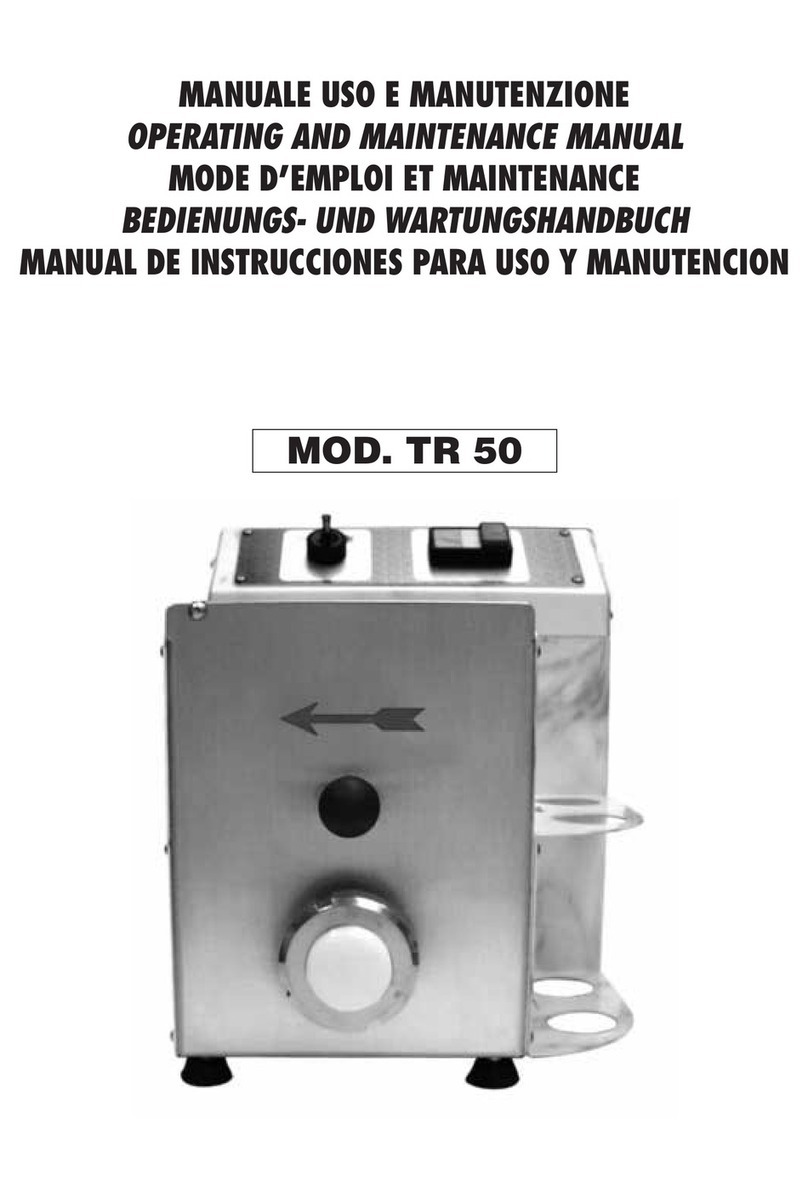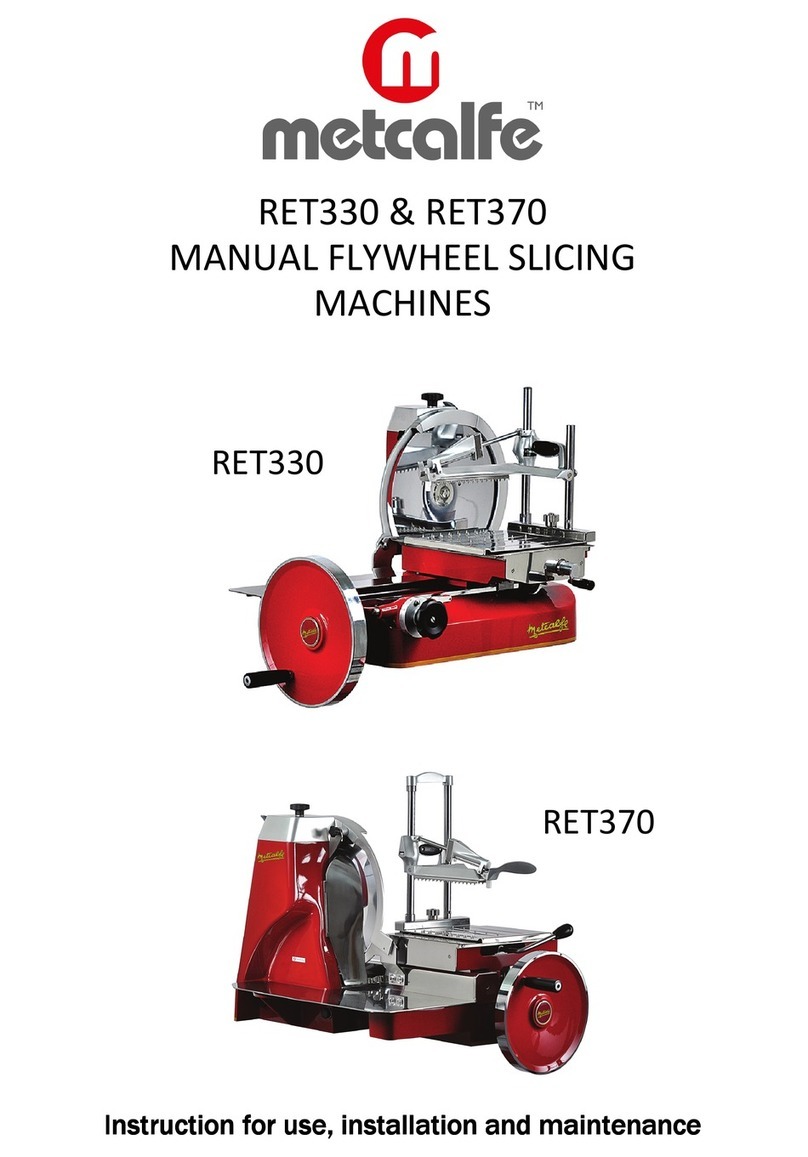
10
2. Before starting the machine the operator must read this instruction manual completely and
be fully aware of its contents.
3. Connection and preparation for operation must be carried out only by a specialised
installation expert, who must use the appropriate instruments to take the preliminary step of
verifying the effectiveness of the ground circuit the machine is to be connected to.
The person responsible for installation must also check the validity of the earth connection
of the machine and subsequently execute connection to the mains circuit according to the
manner prescribed in the current regulations of the country in which the machine is used.
4. The machine must be used only by qualified personnel, who must have reached the
minimum age prescribed by law for the work involved in its use and a general acceptable
level of manual skill for coordination of movements required in correct use, fully respecting
the safety regulations and precautionary measures taken to avoid accidents or damage to
persons or things.
The user must under no circumstances attempt to perform repair work on this machine and
must never remove any component part. In the case of breakdown or damage, the user
must contact an assistance service specialised in the repair of this kind of machine.
5. Do not introduce hands, fingers or any object or tool into the machine close to rotating or
moving parts or any mobile component.
6. To remove (from the inlet or outlet openings) any residual substances from the machine
after it has been used stop the machine, in the safe condition, using the control START/
STOP/0 and proceed as required, using a suitable wooden instrument such as a spoon or
spatula to remove the residue remaining inside.
7. During operation of the machine it is absolutely forbidden to raise or remove the cover,
upturn or tilt the machine or open or remove the safety housing located at the bottom. This
kind of action or improper handling can seriously damage the machine itself, whatever
product is being processed inside it and also the operator or other persons.
8. Before starting work button up tightly and securely the cuffs of your overalls or shirt.
Remove scarves, ties or any other loose garment that may become entangled in any part of
the machinery.
If you have long hair, use pins, a net or any other accessory to keep it in place.
Remove rings, your watch, bracelets and any other item.
Use footwear suitable for the workplace, as prescribed and recommended by safety
regulations in every country in the world.
9. Cleanliness of the area surrounding the machine is a further and very important safety
factor. It is necessary to always keep clean and dry the machine, the work top and the floor
surface around the machine, using appropriate methods to remove any dust, fragments of
foodstuffs, residual substances etc.
A wet floor surface, fragments of products or other residual substances can make the floor
slippery, thus generating risky and dangerous conditions. Proper lighting is also a safety
factor and is important for the operator in particular.
10. When cleaning the machine or replacing discs, use soft but strong five-finger gloves for
protection. The gloves should not drastically reduce sensibility and should allow for firm
control over any objects handled.
11. Always remember that whenever any machine is used, certain risks may continue to be
present. Always bear this mind! Before starting any work concentrate your attention on
the operation you are about to start performing.
Be careful at all times and look out constantly for danger, keeping your wits about you to
ensure you do not run any risks. This is of fundamental importance for the operator.
If the operator is subject to any difficult physical condition or may for any reason whatsoever
have dulled reflexes or suffer (also temporarily) from even the slightest form of malaise that
may cause reduced vigilance, he or she must not use the machine.
12. All protective and safety devices (whether electric or mechanical) installed in the machine
must be kept in perfect working order at all times. The warning stickers and other





























